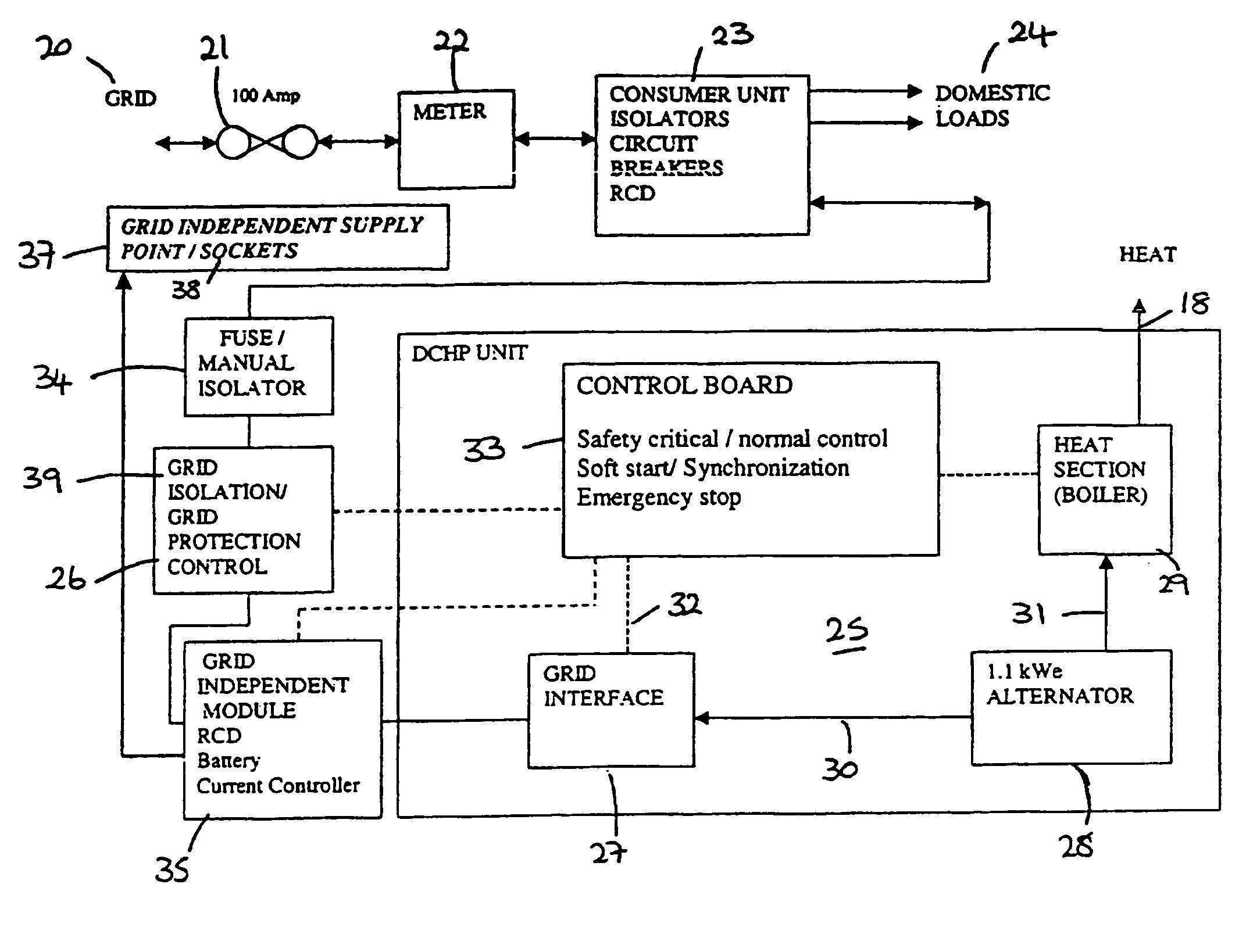Domestic combined heat and power unit
a combined heat and power unit technology, applied in steam engine plants, motors, single-network parallel feeding arrangements, etc., can solve the problems of excessive power consumption, excessive power consumption, damage to the dchp unit, etc., and achieve the effect of reducing the capacity of emergency power generation, reducing the capacity of any commercially available battery, and reducing the power outpu
- Summary
- Abstract
- Description
- Claims
- Application Information
AI Technical Summary
Benefits of technology
Problems solved by technology
Method used
Image
Examples
Embodiment Construction
[0027]The dchp system is based around a Stirling engine 1 as shown in FIG. 1. The engine is preferably a linear free piston Stirling engine the operation of which is well known in the art. For use in a dchp system, the electrical output of the engine should be a single phase output of 16A.
[0028]The Stirling engine 1 is driven by a heat input from engine burner 2. This burner is fuelled by combustible gas supply 3 which is mixed with an air supply 4 under the control of a valve 5. The mixed stream is fed to the burner 2 by a fan 6. This drives the Stirling engine in a manner well known in the art to generate an electrical output 7 from a linear alternator. Heat is extracted from the Stirling engine at cooler 8 which is essentially a heat exchanger through which water is pumped by a pump 9 along line 10. The water passing through the cooler 8 is then further heated in a heat exchanger 11 by exhaust gas from the engine burner which has heated the head of the Stirling engine. In order t...
PUM
 Login to View More
Login to View More Abstract
Description
Claims
Application Information
 Login to View More
Login to View More - R&D
- Intellectual Property
- Life Sciences
- Materials
- Tech Scout
- Unparalleled Data Quality
- Higher Quality Content
- 60% Fewer Hallucinations
Browse by: Latest US Patents, China's latest patents, Technical Efficacy Thesaurus, Application Domain, Technology Topic, Popular Technical Reports.
© 2025 PatSnap. All rights reserved.Legal|Privacy policy|Modern Slavery Act Transparency Statement|Sitemap|About US| Contact US: help@patsnap.com



